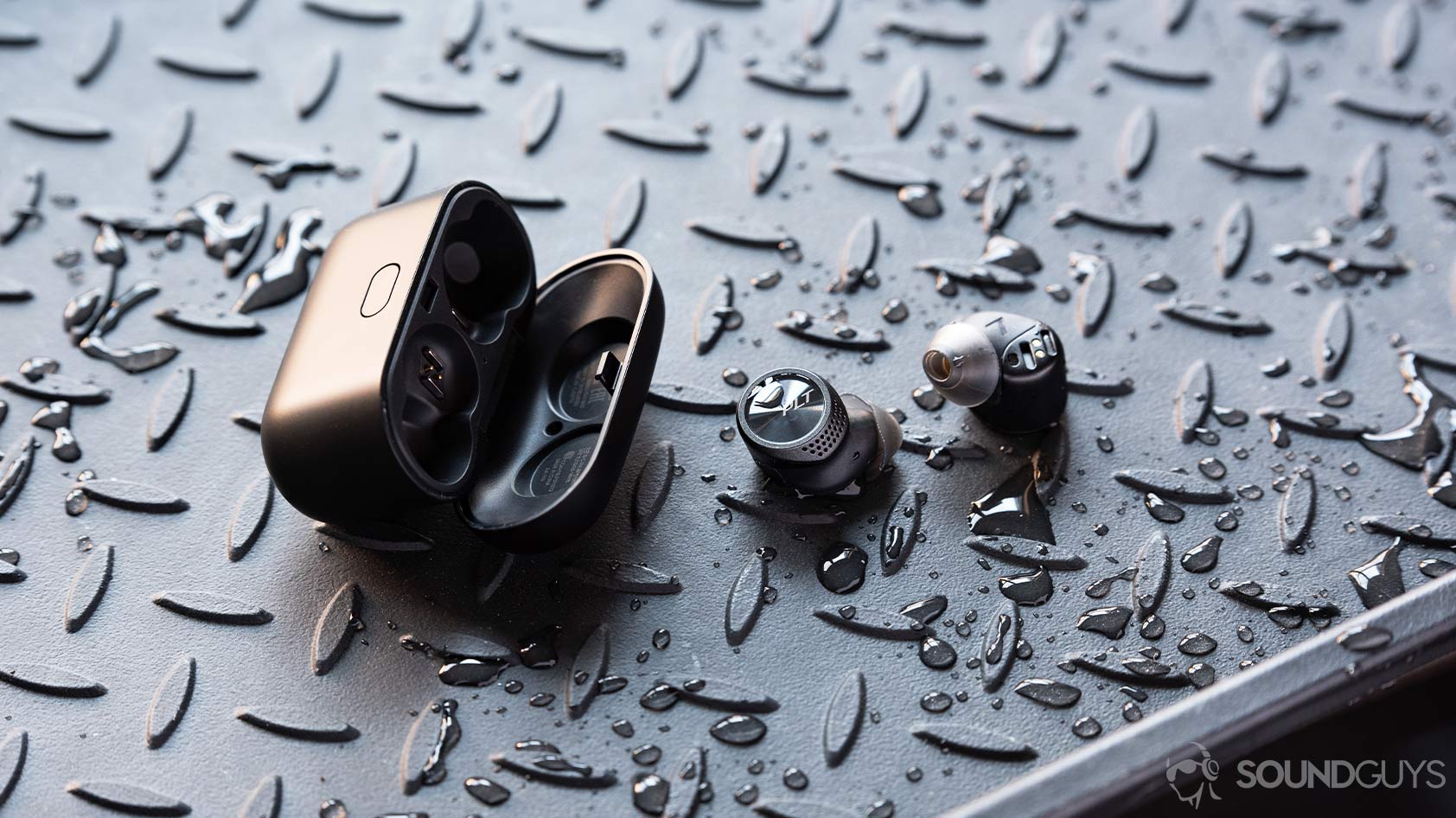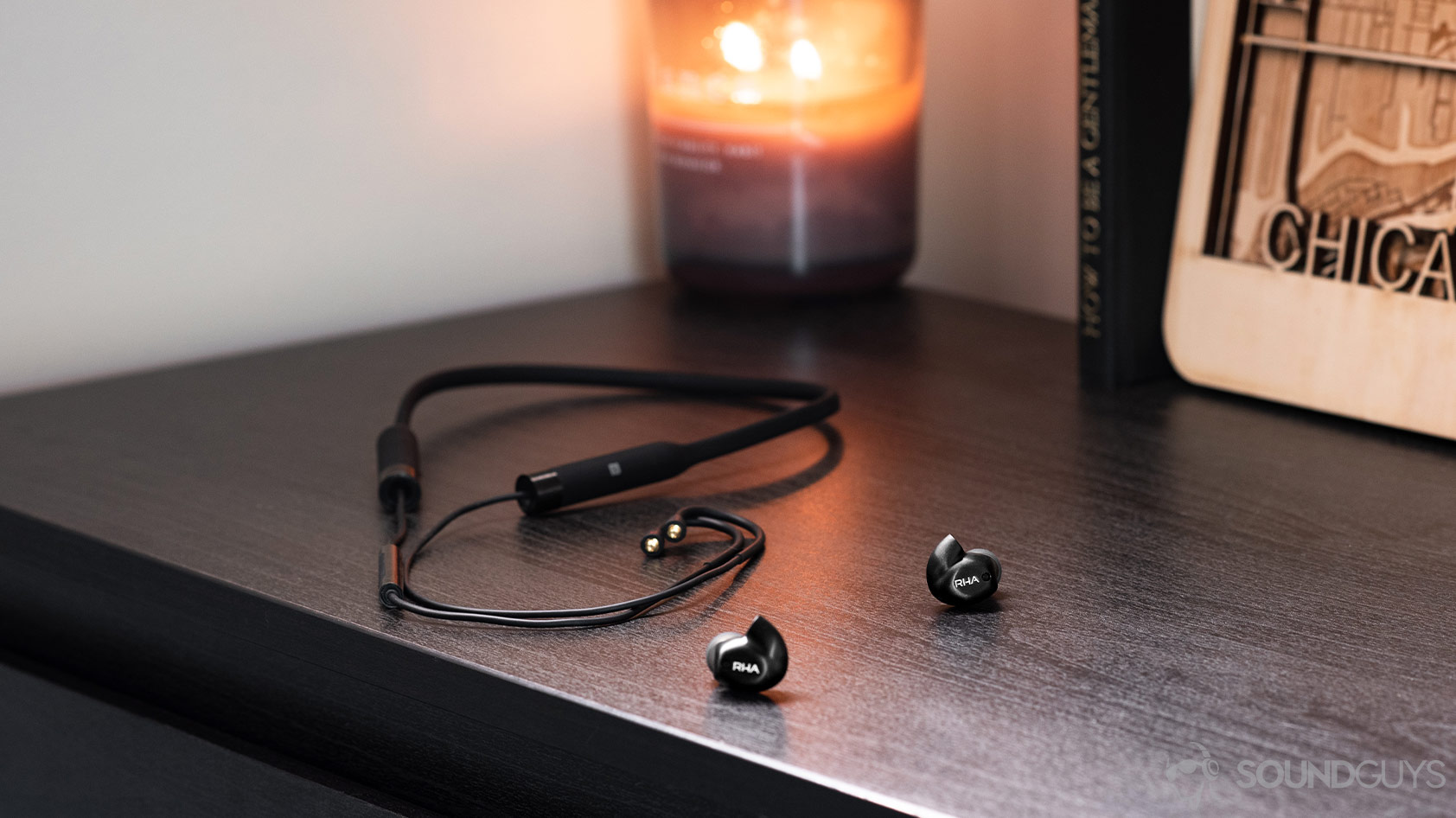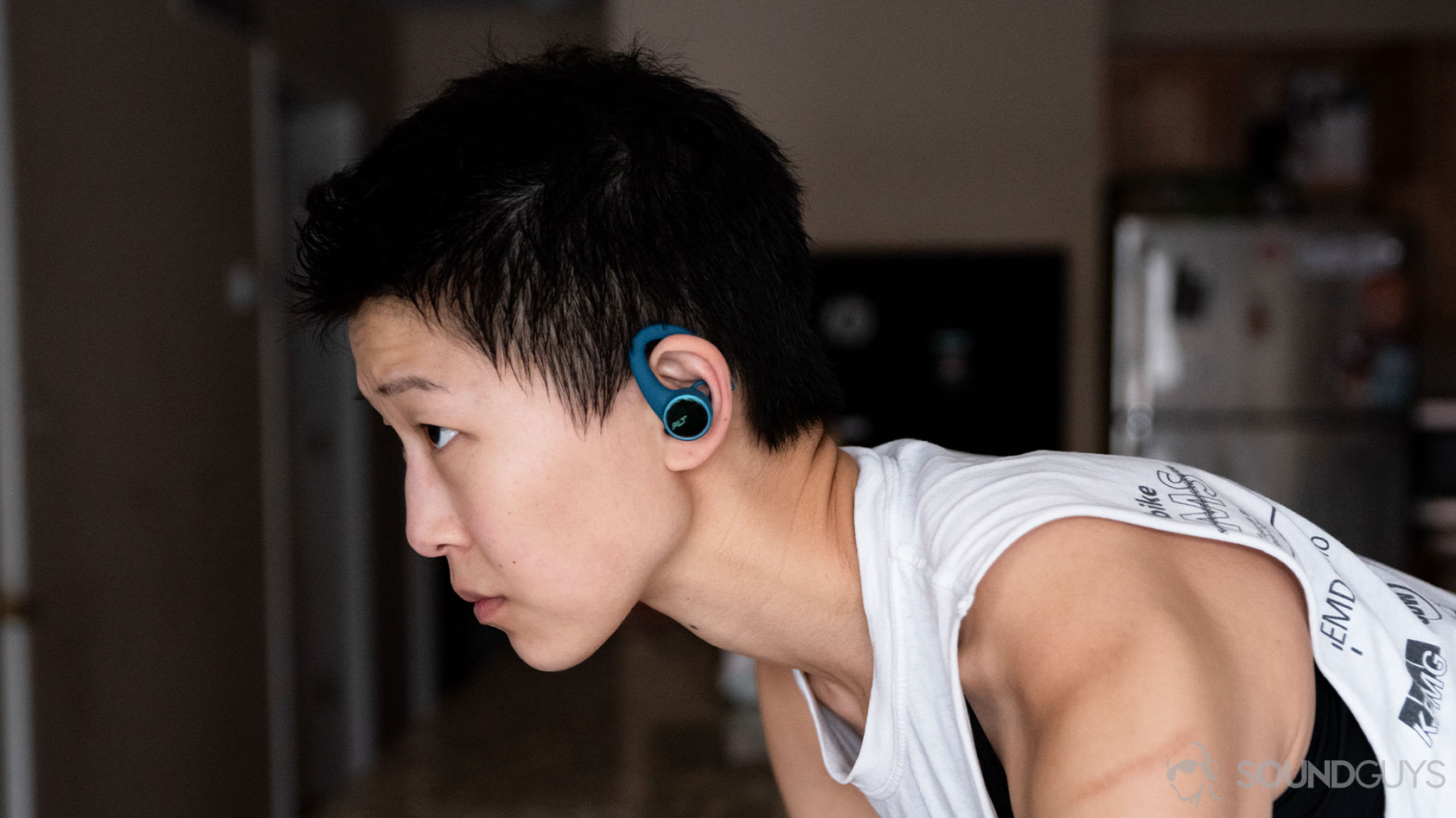All products featured are independently chosen by us. However, SoundGuys may receive a commission on orders placed through its retail links. See our ethics statement.
With the rise of true wireless, is there a place for wireless earbuds?
June 17, 2020
As we acclimate to this indefinite period of work-from-home, it’s of the utmost importance to have a personal headset. Sharing a workspace at home can be difficult especially if you have multiple roommates, but earbuds can make a world of difference. Many of us may gravitate to true wireless earbuds for the convenience and novelty, but standard wireless earbuds are still worth considering. The latter offers excellent battery life, more reliable connection quality, and a more affordable price. Today, we’re making the case for wireless earbuds.
Editor’s note: this article was updated on June 17, 2020, to add a section clarifying the difference between wireless and true wireless earbuds.
Wait, there’s a difference?
Wireless earbuds refer to the kind that do not connect to your mobile device by a cord, but each earbud is connected to the other by a cord. On the other hand, true wireless earbuds refer to earbuds that do not have any cords connecting them to anything, except maybe the case connects to the wall outlet through a charging cord. However, some true wireless earbuds even have fully wireless charging, which works through electrical induction after being placed on a charging platform.
True wireless earbuds: an ongoing evolution

When true wireless technology first entered the world stage, true wireless offerings were slim. We had had our choice of the Bragi Dash Pro, JLab Epic Air, and maybe the Crazybaby Air Nano. Fast-forward and we see a whole new world of possibilities; there are even affordable and AirPods alternative-specific options available.
While connectivity and battery life remain the Achilles’ heel of truly wireless technology, things have improved. Just look at the Samsung Galaxy Buds Plus which offer over 11 hours of playtime on a single charge. Premium models, like the 1More True Wireless ANC, support Bluetooth 5.0 right out of the box to further improve power efficiency and connection quality. What’s more, even reasonably priced options like the Anker Soundcore Liberty Air earbuds grant ample standalone playback time, which is only extended by the included charging case.
We’re seeing more specialized options like the Beats Powerbeats Pro. With the advent of true wireless earbuds, it seems traditional wireless options may be rendered obsolete. There are, however, still a few reasons to go for the older tech.
Wireless earbuds remain reliable with far more options

Ultimately, a pair of wireless headphones is only as good as its connectivity. You could have the fanciest pair of true wireless earbuds available but if they can’t maintain a reliable connection, they’re nothing more than overpriced earplugs. Although listeners still come across connectivity hiccups with wireless headphones and earbuds, the issue seldom arises compared to true wireless counterparts.
Additionally, while we’re witnessing an increase in cheap true wireless earbuds, the fact remains that if you want the best-untethered bang for your buck experience, wireless earbuds will outperform true wireless ones, hands down. It makes sense: the technology has had more time to mature, and there are fewer spatial limitations when it comes to engineering regular wireless ‘buds.
| Pocket to earbuds (dBm) | Far pocket to earbuds (dBm) | Signal strength: 0m from phone | Signal strength: 1m from phone | Signal strength: 2m from phone | Signal strength: 3m from phone | Signal strength: 5m from phone | |
|---|---|---|---|---|---|---|---|
Erato Apollo | Pocket to earbuds (dBm) -55 | Far pocket to earbuds (dBm) -63 | Signal strength: 0m from phone -29 | Signal strength: 1m from phone -45 | Signal strength: 2m from phone -65 | Signal strength: 3m from phone -67 | Signal strength: 5m from phone -84 |
JLab JBuds Air | Pocket to earbuds (dBm) -42 | Far pocket to earbuds (dBm) -50 | Signal strength: 0m from phone -22 | Signal strength: 1m from phone -45 | Signal strength: 2m from phone -59 | Signal strength: 3m from phone -63 | Signal strength: 5m from phone -83 |
Rowkin Ascent Micro | Pocket to earbuds (dBm) -50 | Far pocket to earbuds (dBm) -55 | Signal strength: 0m from phone -29 | Signal strength: 1m from phone -48 | Signal strength: 2m from phone -55 | Signal strength: 3m from phone -57 | Signal strength: 5m from phone -72 |
OnePlus Bullets Wireless | Pocket to earbuds (dBm) -42 | Far pocket to earbuds (dBm) n/a | Signal strength: 0m from phone -23 | Signal strength: 1m from phone -39 | Signal strength: 2m from phone -55 | Signal strength: 3m from phone -63 | Signal strength: 5m from phone -72 |
Not only that, but there are far more niche options in the wireless earbud market. We’ve seen plenty of noise canceling, workout, and general-purpose products come our way. True wireless varieties are creeping up on the standard wireless market share, though. Sure, not every product is groundbreaking, but it tends to offer a stable connection and better battery life than something of the true wireless category.
What’s more, battery life may be improving with truly wireless ‘buds but longevity is still a concern. The re-charge and depletion cycle is constant with the more portable tech, a result of the charging cases. Although this means you’re virtually always topped up on battery life, it means the product’s lifetime is shortened: the tiny cells can only charge and re-charge so many times before performance takes a noticeable hit.
Who should buy true wireless earbuds and who should buy wireless earbuds?

Listeners who prioritize freedom of movement and convenience, even at the expense of reliability, above all else should invest in true wireless earbuds. As an athlete, I’ve found it nearly impossible to return to wireless workout earbuds and consider wired earbuds for exercise sacrilegious. Additionally, if you pride yourself on being in the know when it comes to audio, then the novelty of true wireless earbuds may very well appeal to you. Granted, you’ll be paying a premium for it most of the time.
If you need the most out of your nickels and dimes, wireless earbuds still trump true wireless ones.
Conversely, those who don’t mind the pedestrian aesthetic of wireless earbuds will greatly benefit from better battery life (on average) and more reliable connection quality. Perhaps you won’t look like a chic background character in Bladerunner 2049, but at least you won’t have to worry about sputtering connectivity issues.
While 2020 may very well be the year true wireless earbuds outperform their similarly priced wireless competitors, that’s not the case quite yet. Yes, the totally wireless Jabra Elite Active 65t has decreased in price with the release of the Elite Active 75t, but it’s still significantly more expensive than the Jabra Elite Active 45e. If you’re just looking for a pair of earbuds to tide you over for daily use and aren’t too concerned with much else, you’re best off investing in an old, but a reliable pair of wireless earbuds.
Thank you for being part of our community. Read our Comment Policy before posting.